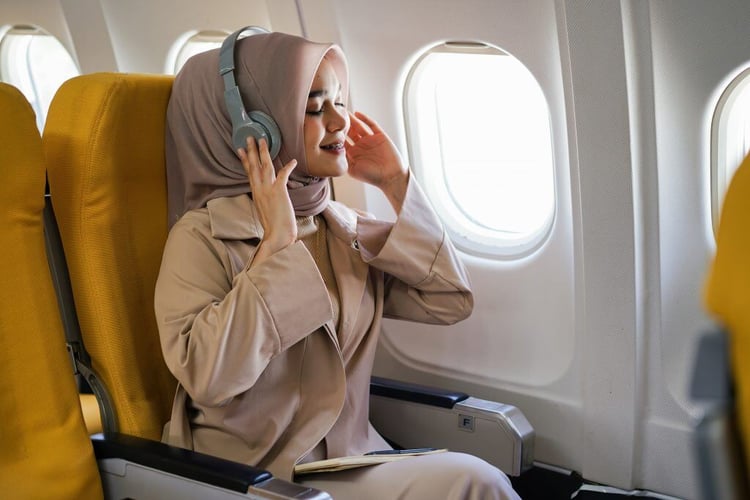For decades, listening to an in-flight film or program has felt like a compromise. Passengers want to be entertained while jet-setting across the country — or the world — but have come to expect the latest in the John Wick saga to sound like it's been filtered through a tin can.
Cheap headsets/earbuds and low-quality media have become the norm. However, over the last few years, we've seen vast improvements in the audio experience that passengers want for themselves. The addition of Bluetooth in the cabin has allowed for passengers to bring their own, high-quality, audio equipment on board.
Passengers clearly prefer a high-fidelity audio experience; shouldn’t your aircraft’s IFE be able to deliver that?
With its new in-flight entertainment system Astrova, Panasonic is introducing spatial audio to airlines and passengers — and we think you'll never want to go back.

Improvements in Passenger Hardware
IFE that supports Bluetooth might be the biggest catalyst for the coming audio revolution. Better on-board hardware, provided by the passengers, means that content providers have the opportunity to revisit the quality of the content they’re providing. We can surprise and delight passengers with an exceptional audio experience.
Spatial audio from Panasonic Avionics is set to do just that. So how does it work?
Rolling Stone may have described it best:
“[People listen] in stereo: the right ear at 3pm and the left ear at 9pm to use a clock face as a reference. Designers developed systems along that way that let you hear…through multiple speakers.
What spatial audio, does differently is an innovation to separate the sounds – voice, instruments, a bird chirping, a train passing, an airline passing above the clouds, etc. As a listener, you hear sound as it is in real life: above your head, below your feet, and in every other direction.”
Our spatial audio provides three-dimensional, moving surround sound with more virtual positions than a 7.1 surround sound home theater system.
In essence, spatial audio can mimic the experience of physically being in a space — for example, a passenger watching the latest from Marvel — they'll feel like they are in New York, hearing taxis drive by, pigeons cooing, and the battle raging, from all the different angles and positions from which they are genuinely emanating. Above, from the side, in-front, behind, from all directions.
Does spatial audio work on every device and platform?
Apple, Amazon, Netflix, Ubisoft, and others are offering spatial audio across media types. That includes music, games, and any other media with an audio component.
What we have done at Panasonic is offer that experience to passengers, through the in-flight entertainment system, without the need for special hardware. All passengers can experience superior sound quality whether using the headphones provided by the airline or their own headphones, through wired connections or over Bluetooth.
Spatial audio paired with Astrova's 4K OLED seatback displays will offer airline passengers the first truly high-definition in-flight experience.

Do I have to upgrade my airline's media catalog?
No. Perhaps the best part — besides the superior, high-fidelity audio quality — is that your airline can adopt spatial audio without having to dish out more funds on media spend.
Your airline does not need special encoding or changes to media procurement processes to be able to use spatial audio. Really.
It's this commitment to the passenger experience that has led airlines to adopt Astrova and its high-fidelity spatial audio.
Contact us to learn more about Panasonic's spatial audio offering to airlines.
